Full Guide To Golden Healer Quartz vs. Citrine (This Is The Difference)
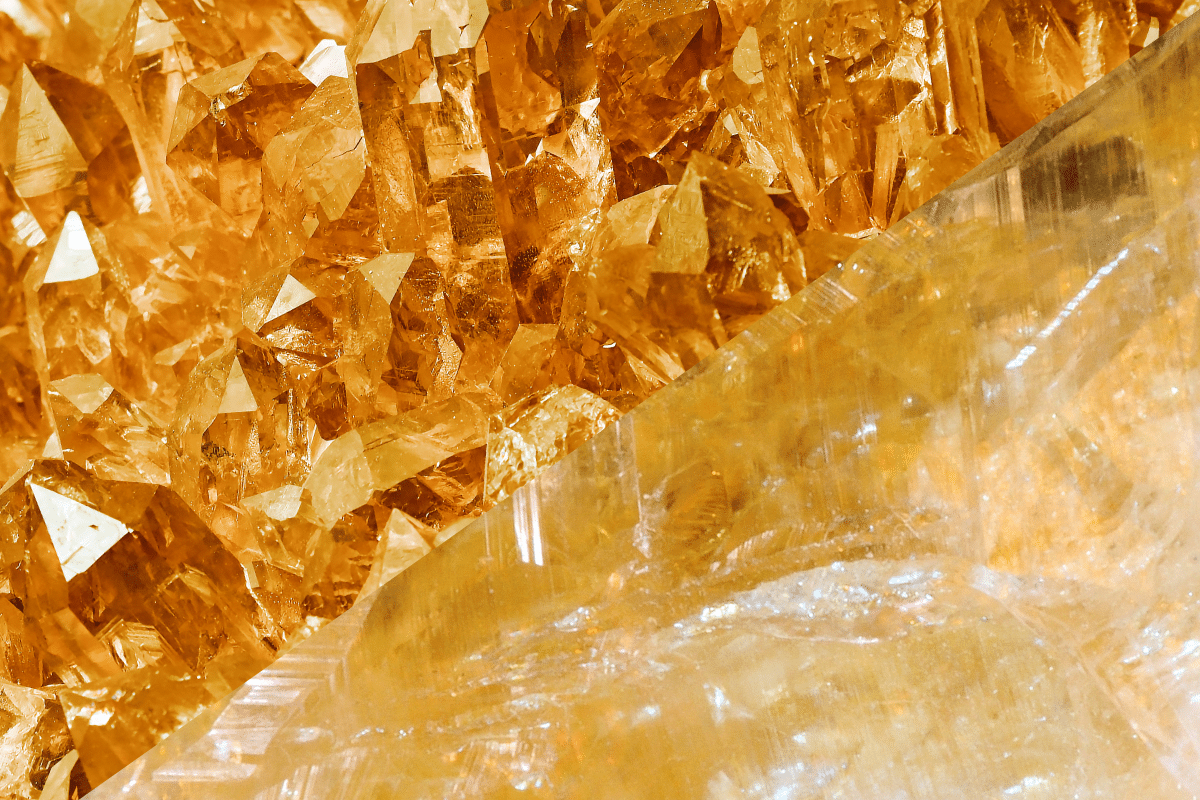
In order to work with our crystals effectively, we need to understand their properties. With crystals that look similar or have similar uses, such as golden healer quartz and citrine, it can be difficult to determine which one to work with. The answer should always be; the one that you are drawn to the most. However, if you are looking to find the difference in physical appearance as well as metaphysical properties, you’ll find your answer here.
These stones are both varieties of quartz. Golden healer naturally has a more intense color and is often patterned with many different shades of yellow/orange/brown. Citrine generally has 1 color. Golden healer is mostly used for any form of healing, while citrine is used for abundance and confidence.
Continue reading if you want to know more about the (physical) qualities of these stones, as well as how you can use them in your spiritual practice.
Want more help or information? If you have any more questions after reading this blog post or want a personal answer for your specific situation, join the free Facebook group! We promise you’ll get an answer from either our team members or a community member.
Golden Healer Quartz vs Citrine – How To Tell The Difference?
In order to understand the difference between these two stones, we can look at the color, shape, pattern, clarity, and more. Below we’ll describe all these aspects in detail.
Chemical Composition
Both golden healer quartz, also known as hematoid quartz, and citrine belong to the quartz family, meaning they are made up of silicon dioxide. The golden healer quartz gets its golden color from iron impurities present, most commonly hematite, in the stone.
Citrine, on the other hand, is rare in it’s natural form. Most citrine is heat-treated amethyst or smoky quartz. The heat is what causes the change in color. If you want to know more about how to spot the difference between natural citrine and heat-treated citrine, as well as how it changes the properties, have a look at this article: Heat-treated Amethyst vs. Citrine – This Is The Difference.
Color
Golden healer quartz and citrine can be both pale to deep yellow/orange in color. For citrine, this depends on the temperature it was heated to; the higher to more intense the color. Natural citrine is generally pale. For golden healer, the more iron is present, the deeper the color.
As a result, natural golden healer quartz is likely to have a more intense color than natural citrine. This also means that spotting the difference between heat-treated citrine and golden healer quartz is much more difficult to see, as they have the same bright golden color.
If you have a stone that has an intense color, the best thing to look for is the base color. Heat-treated citrine has an intense white base color, while golden healer quartz does not. If this doesn’t clear things up for you, have a look at the pattern. We’ll discuss this below.
Also read: Clear Quartz vs. Rose Quartz – This Is The Difference
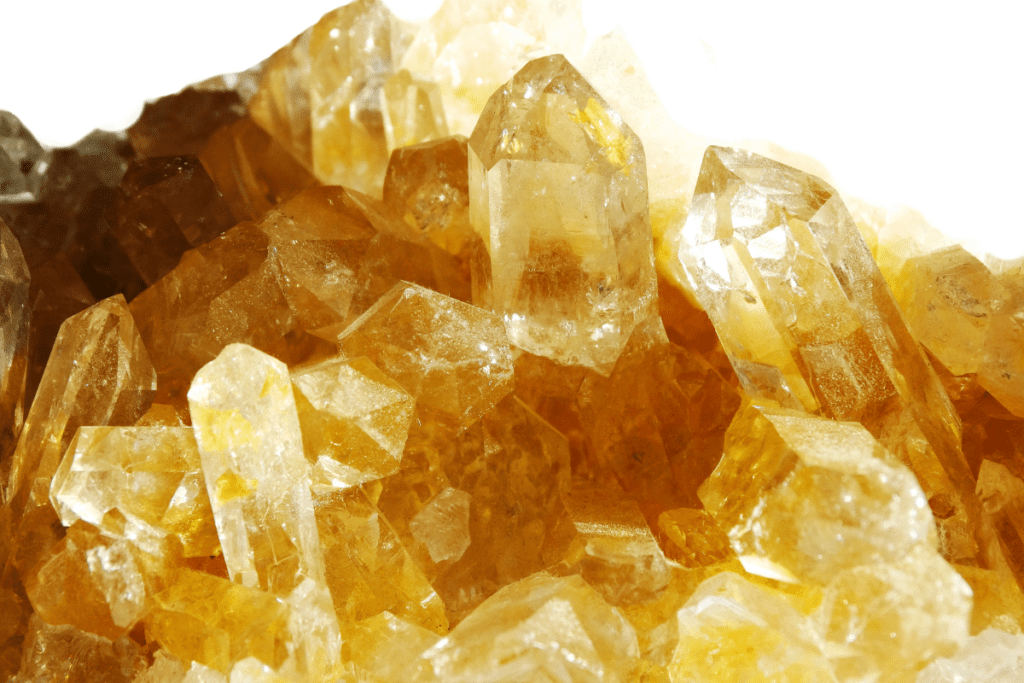
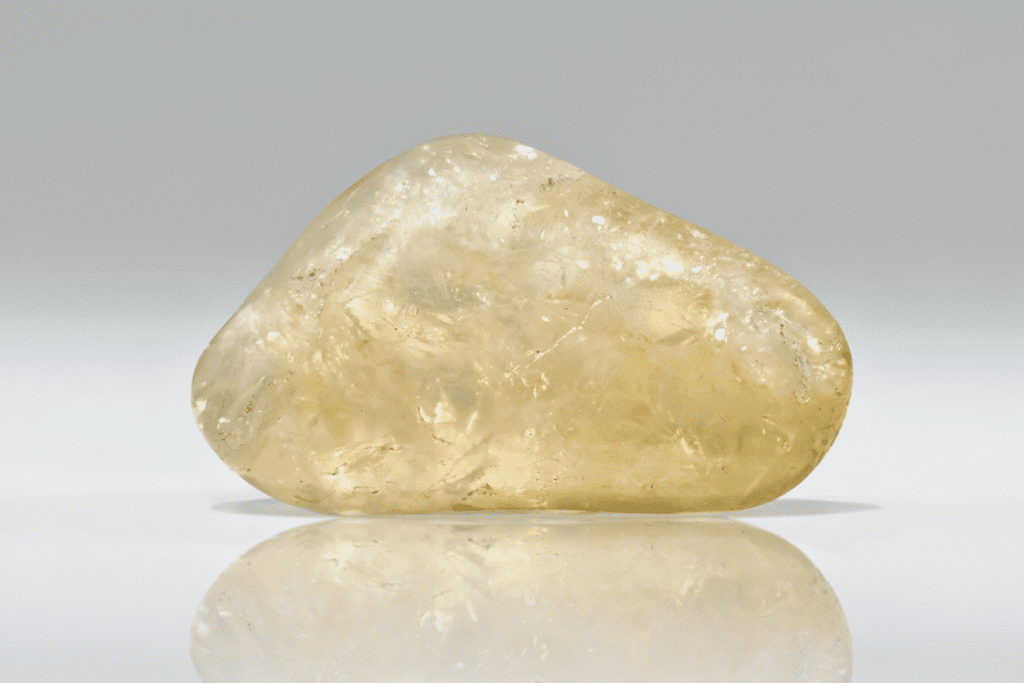
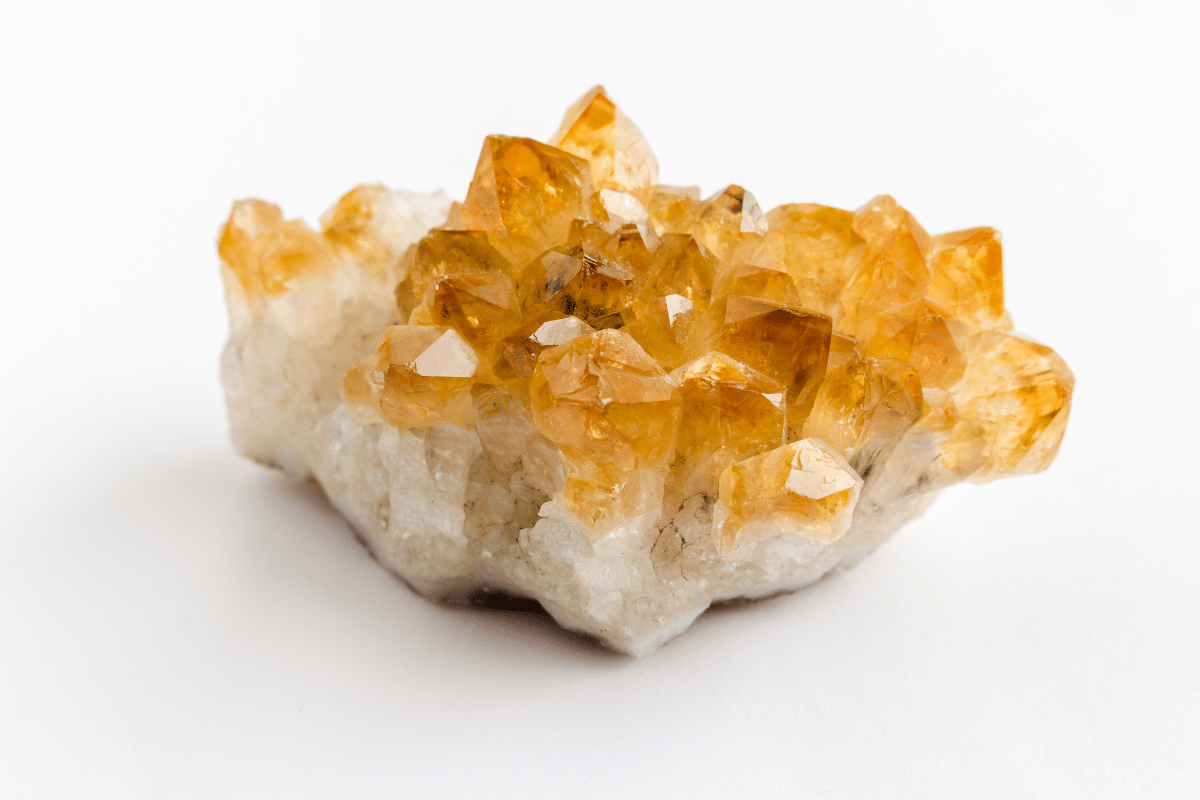
Pattern and Clarity
One of the biggest differences between golden healer quartz and citrine is the pattern. Citrine is relatively uniform, although it might have some subtle color zoning, where there are spots with a more or less intense color. Golden healer quartz, on the other hand, always has very pronounced sections with intense color, and sections with little to no color. Some parts of this stone might even be brown.
In terms of clarity, both stones can be transparent to opaque, making it very difficult to spot the difference using the clarity.
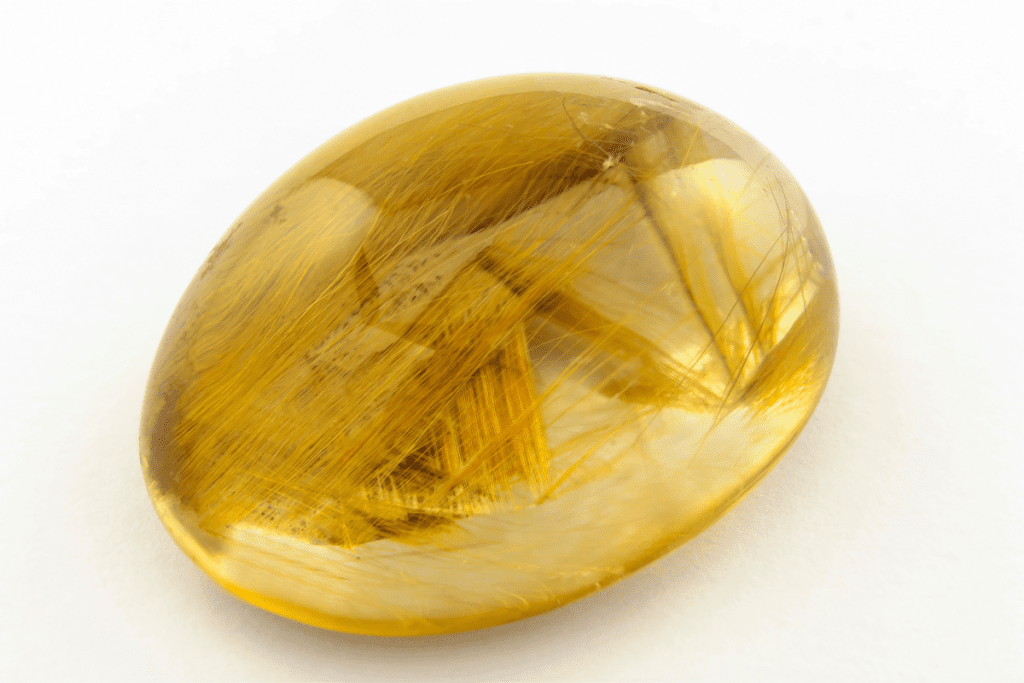
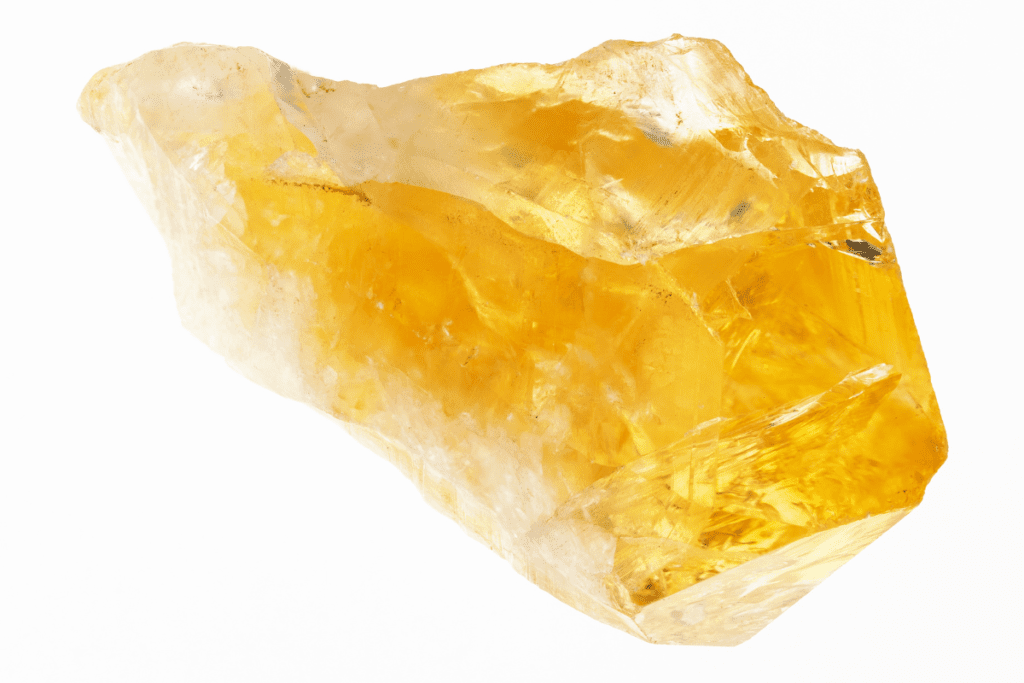
Hardness
Golden quartz and citrine are relatively hard stones, both rating 7 on the Mohs scale. If you’re unfamiliar, the Mohs scale of hardness determines a stone’s hardness by measuring how scratch-resistant it is. According to this scale, a stone can scratch any other mineral with a lower score. For reference, talc is a 1, whereas diamond is a 10.
Their durability makes them preferable in making jewelry and ornaments, and means they can withstand water.
Also read: Calcite vs. Quartz – This Is The Difference
Care
Although they’re relatively durable, be careful when handling and storing these stones to prevent damage.
We recommend cleaning your stones by either running them under tap water or cleaning them with a damp cloth. If you’d like, you can use some detergent as well. Make sure to dry the stones afterward. Although it won’t cause immediate problems, we never recommend leaving stones to soak, as this can turn them dull or brittle.
Apart from physically cleaning the stones, you might want to clear them from negative energies. This is highly recommended if you use them for their metaphysical properties.
The reason for this is that these stones absorb low vibrations. Every month or so, you want to remove these energies from the stone so you can continue to use it. After cleansing, it is recommended you also recharge the stones to make sure they are full of positive energy to share with you.
Golden healer quartz and citrine can be cleansed and recharged by moonlight or using cleansing crystals like selenite and clear quartz. The stones can also be left in clean salty water for a few minutes to tune it to its original vibration, but again, beware that this may cause damage in the long term.
We do not recommend leaving any type of quartz, including golden healer and citrine, in the sun, as they are likely to fade when exposed to direct sunlight for longer periods.
Location
Golden healer quartz mainly comes from Zambia and Madagascar. Natural citrine, though rare, can be found in Russia, Madagascar and Kazakhstan. The amethyst that man-made citrine is made of is found all over the world. The largest producer of amethyst is Zambia.
(Meta)physical Healing Properties
The similar makeup and color of these stones mean they have similar properties too. However, there are some differences.
Overall, golden healer quartz is mostly used for all forms of healing, as the name suggests. It has high vibrational energies that help relieve all types of aches, whether that is emotional, mental of physical.
The stone is also often used in chakra alignment and activation, as well as manifestation and amplifying energy flow within the energy centers. Golden healer quartz is also helpful in breaking destructive patterns and restoration of courage and determination.
Citrine, on the other hand, is a popular crystal used for attracting abundance and gaining confidence.
Physically, citrine also helps with digestion, immunity, detoxing the body, and blood circulation. It can also be useful in soothing menstrual cramps, preventing allergies and keep the thyroids functional. In the past, the stone was used to ward off diseases and as protection amulets against snake bites.
Chakra Association
Golden healer quartz is mostly associated with the lower three chakras; the root, sacral and solar plexus. However, it balances all chakras and might even be associated with the crown chakra. Citirne is mostly connected to the solar plexus, but also to the sacral chakra.
Depending on the color of your stone, it is more or less connected to some chakras. For example, golden healer quartz with more transparent parts is more likely associated with the crown chakra, whereas a stone with deeper, more intense orange hues is more connected to the root or sacral.
In total, there are 7 chakras, or energy points on our body, each of them linked to a certain aspect of our lives. We can link each chakra to crystals or gemstones by color and its properties.
- Root chakra (Muladhara) is represented by black/red and is located at the base of the spine. This chakra is related to stability.
- Sacral Chakra (Svadihsthana/ spleen) is represented by orange and is located below the navel. The sacral chakra is associated with feelings and sensuality.
- Solar Plexus Chakra (Manipura) is represented by yellow and is located above the naval. The solar plexus chakra is related to intellect.
- Heart Chakra (Anahata) is represented by green/pink and is located in the chest area. This chakra is associated with loving and emotional healing.
- Throat Chakra (Vishuddha) Is represented by blue and is located at the end of the throat. This chakra is associated with communication and tangible dialogues.
- Third Eye Chakra (Ajna) Is represented by indigo and is located between the eyebrows. The chakra is related to spiritual understanding.
- Crown Chakra (Sahasrara) is represented by white and is seen as our connection to the divine.
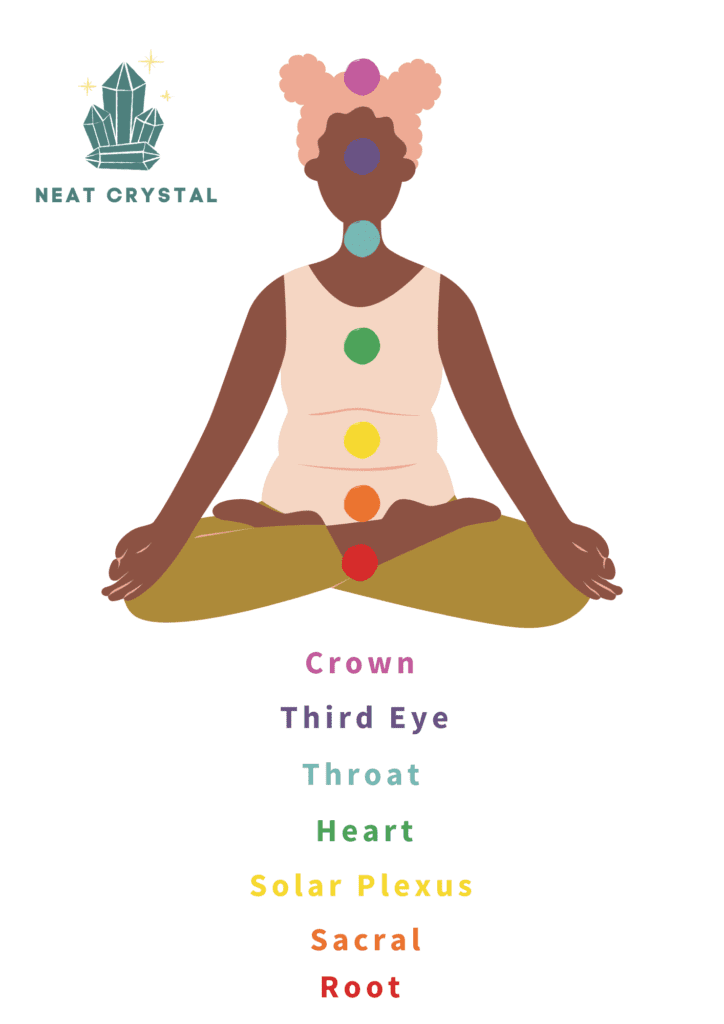
Also read: What Chakra Is Citrine? (Full Guide)
Zodiac Association
Citrine is a modern and traditional birthstone assigned to November along with yellow topaz, and thus the zodiac Scorpios and Sagittarius born in that month. Citrine is also associated with the Sun, the ‘planet’ of lifeforce and creativity, which rules Leo.
Golden healer quartz is not a birthstone, but is associated by Saturn, the planet of structure and discipline, which rules Capricorn.
When we talk about a planet ruling a zodiac sign, we simply mean that the planet has more influence over the sign than the other planets. Using crystals that are associated with the same planet as your ruling planet helps you balance all the different aspects of your sign. For example, for leo, working with citrine means being passionate, confident and determined, without turning arrogant.
Also read: The Complete Guide To Citrine And The Zodiac Signs




Element Association
Golden healer quartz and citrine are both connected to the fire element. The element represents passion, rebirth, hope, death and transformation. Fire personality traits include creativity, passion, empathy, and authority. Working with stones associated with this element allows you to take calculated risks, and sparks passion.
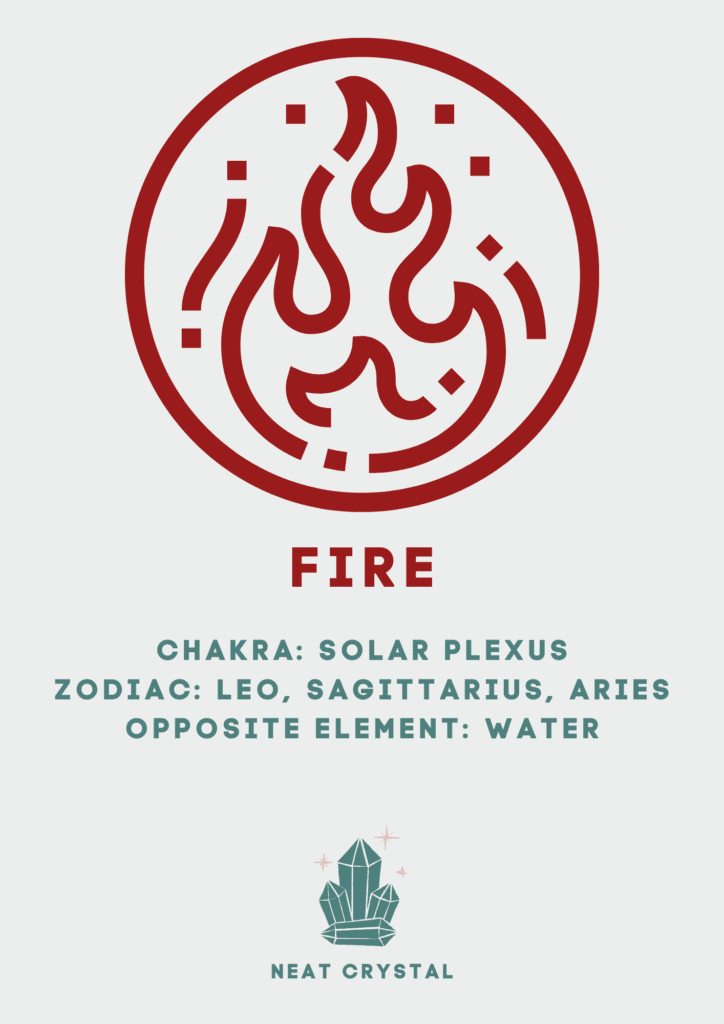
Ruling Planet
Citrine’s planetary association to the sun brings creativity, power and vitality. The Sun governs how we relate with others. A strong sun increases willpower, neutralizes negative entities and improves body immunity. The sun can also represent authority and power, hence regarded the most powerful of all planets in astrology.
Golden healer quartz’s association to Saturn means this stone is perfect if you’re wanting to accomplish something that requires determination and hard work. It’ll make you feel confident and allow yourself to trust yourself while working towards your goals.
Also read: (Heat-Treated) Amethyst vs. Citrine – This is the Difference?
Numeric Vibration
Golden healer quartz vibrates at the frequency of 11 while citrine vibrates at 6. Number 11 is a high vibration master number that requires to remain balanced at all times. In numerology the number is used to represent spiritual awakening. The number brings spiritual awareness, insight, and charisma. People who resonate with the number are good teachers, admirable and dreamers.
Number 6, on the other hand, is the number used to represent perfection. The number is also used to represent our fears, possessions and finances. Traits like humility, responsibility, trustworthy are also associated with this number.
Uses
There are many different ways to use these stones. Below we’ll outline a few options for you.
Jewelry
Wearing jewelry is the best way to include these stones into your life, as they allow you to work with the stone’s energy all day. Make sure to wear them on you skin, which will allow you to reap the most of the stone’s benefits. Golden quartz and citrine jewelry boosts confidence and balance. These gemstones can also be carried in the pocket throughout the day.
Also read: The Complete Guide To Wearing Citrine
Home / office
Golden quartz is all about good energy. In Feng shui, the stone may be combined with other stones to amplify its properties. The best way to use these gemstones at home is by placing them near your bed for peaceful sleep.
Citrine is used to attract money and fortune in Feng shui. Throughout history, citrine was believed to attract wealth, hence dubbed the merchant’s stone. Citrine utilizes the fire energy and is commonly placed at a central area of the home to bring energy and cheerfulness.
Meditation
Using the golden quartz and citrine in meditation brings immense healing to the mind, body and soul. The stones will balance your chakras and ensure protection from negative entities. The stones will also bring you into a meditative state and bring light and healing when holding it between your palms.
If you’re using these stones to work with your solar plexus chakra, below you’ll find a guided meditation to help you along.
Best Combinations
To get the most out of our work with crystals, it can be incredibly beneficial to pair and combine crystals with similar properties. This way, they can strengthen and enhance each other. Below you’ll find some interesting options.
Golden quartz works well combined with any healing stones, however the combination will be dependent on your specific need. When combined with magnetite this pair cleanses auric bodies and fill you with light. This can be used as a remedy to release what no longer serves you.
Smoky quartz combined with citrine is a powerful grounding energies pair. Smoky quartz plays its part as a stress and anxiety reliever. When combined the pair will get rid of discomfort, negative thoughts and promote action. The two will also ground your energies and help you feel safe.
Citrine can be used together with emeralds for love and the heart chakra. Emeralds are closely related to the heart, passion and love relationships. The pair can be used to manifest a new partner and boosts courage to make new friends. Along with a boost in confidence, the combination lays a huge role in our social lives.
Finally, malachite combined with citrine is a great pair to cultivate positive transformation. This pair will help achieve the changes we need in our lives. It also eases you into the transition by helping you embrace the changes positively. Count on this combination when you want to find the true meaning of life, looking to break negative patterns and courage to take the next step.
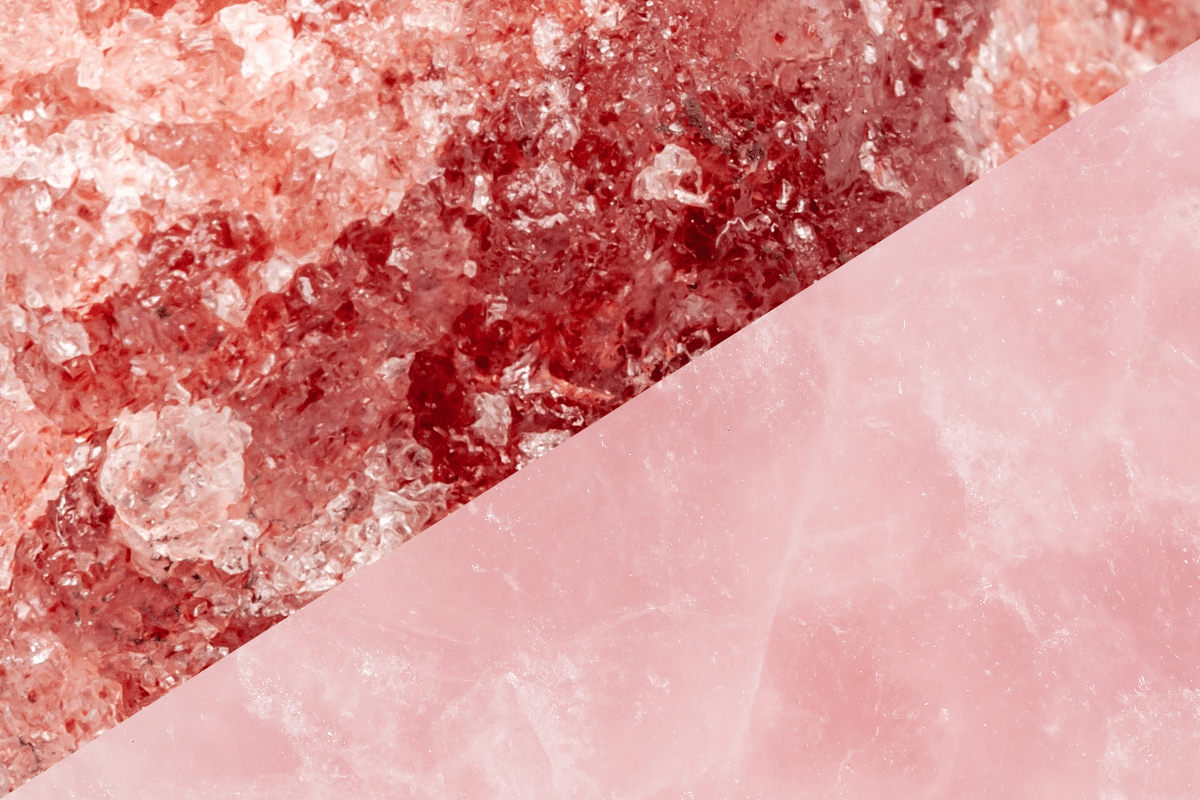

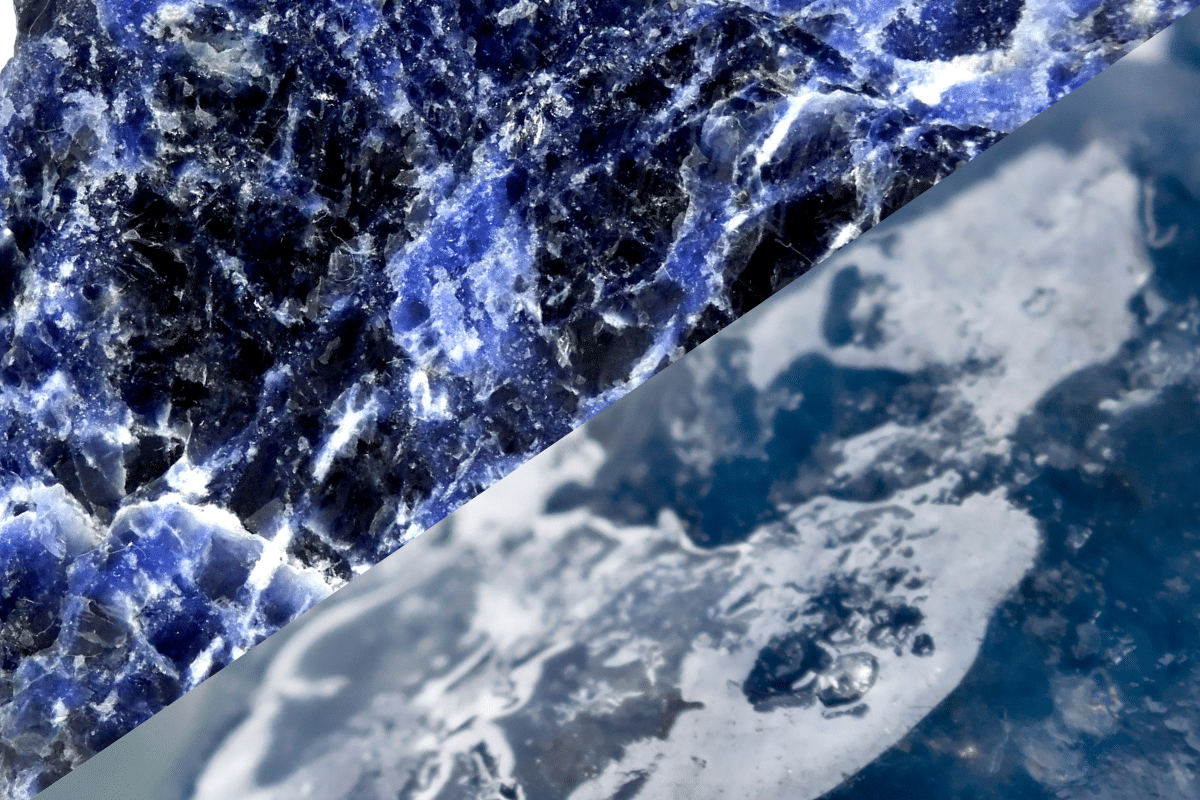




9 Comments